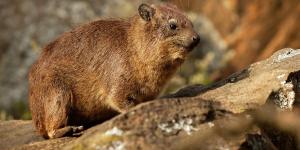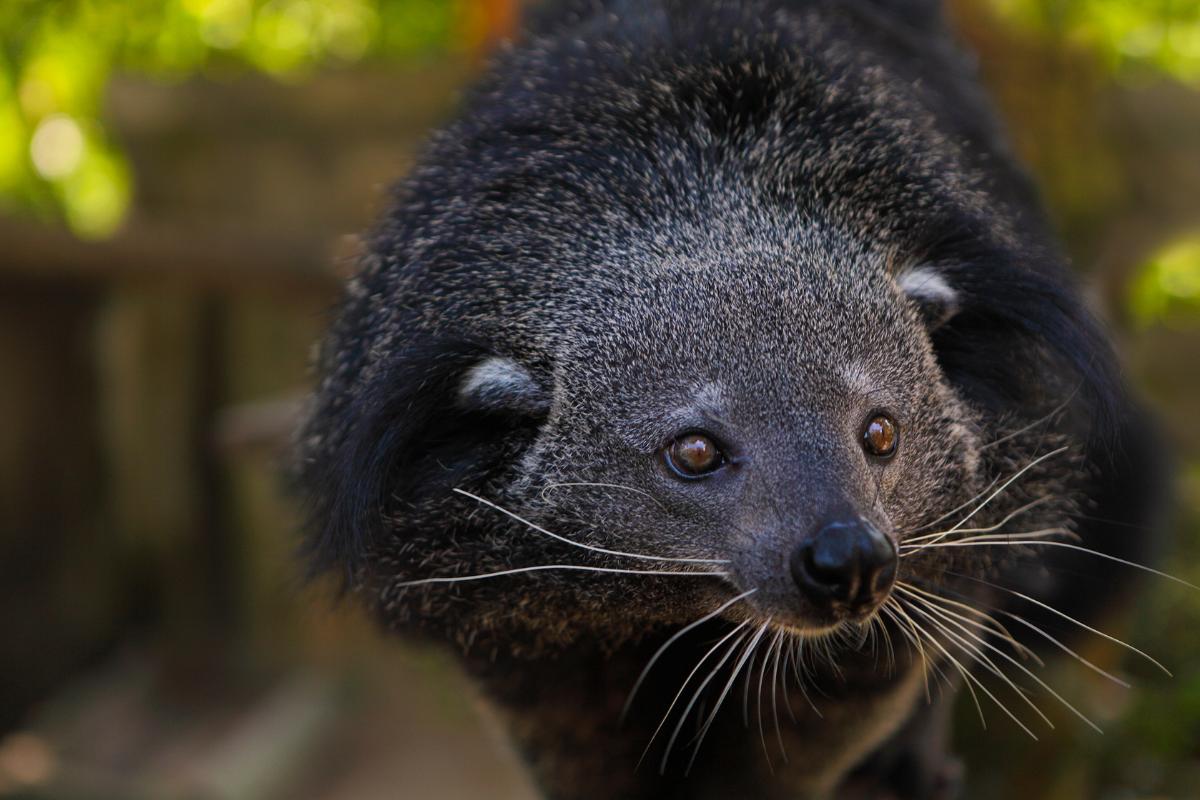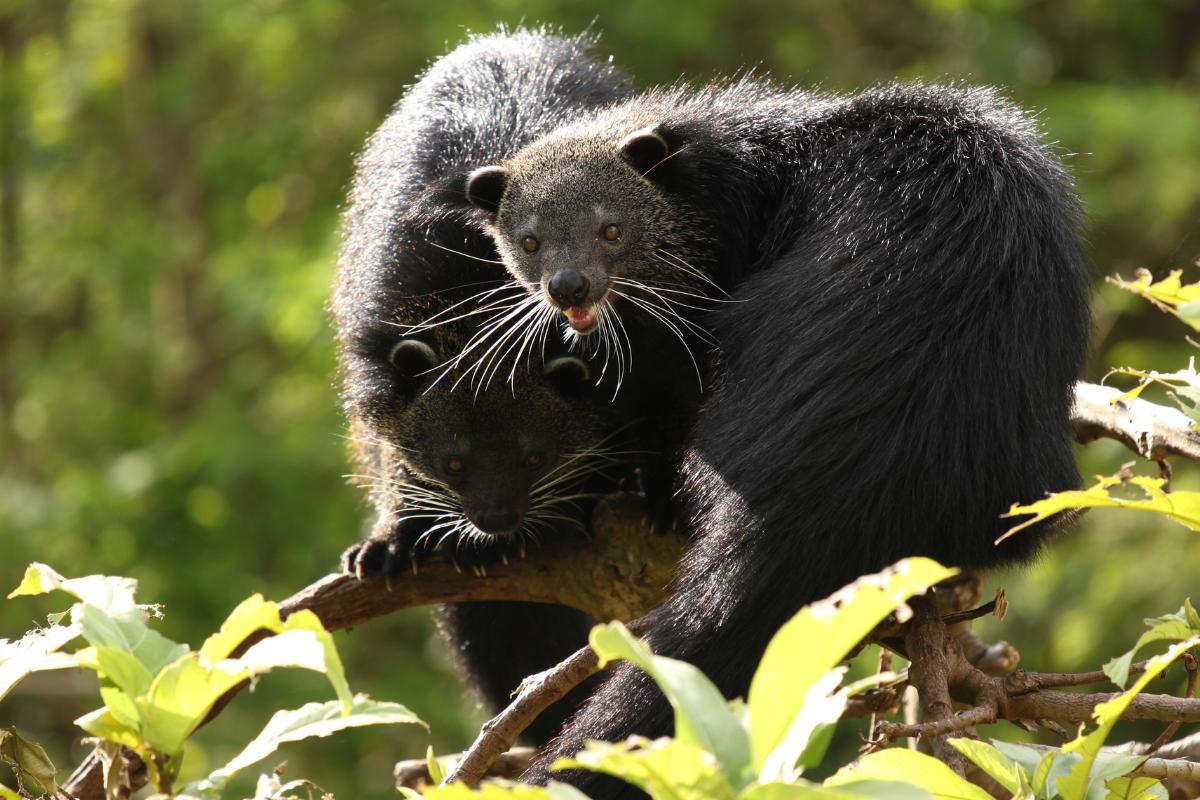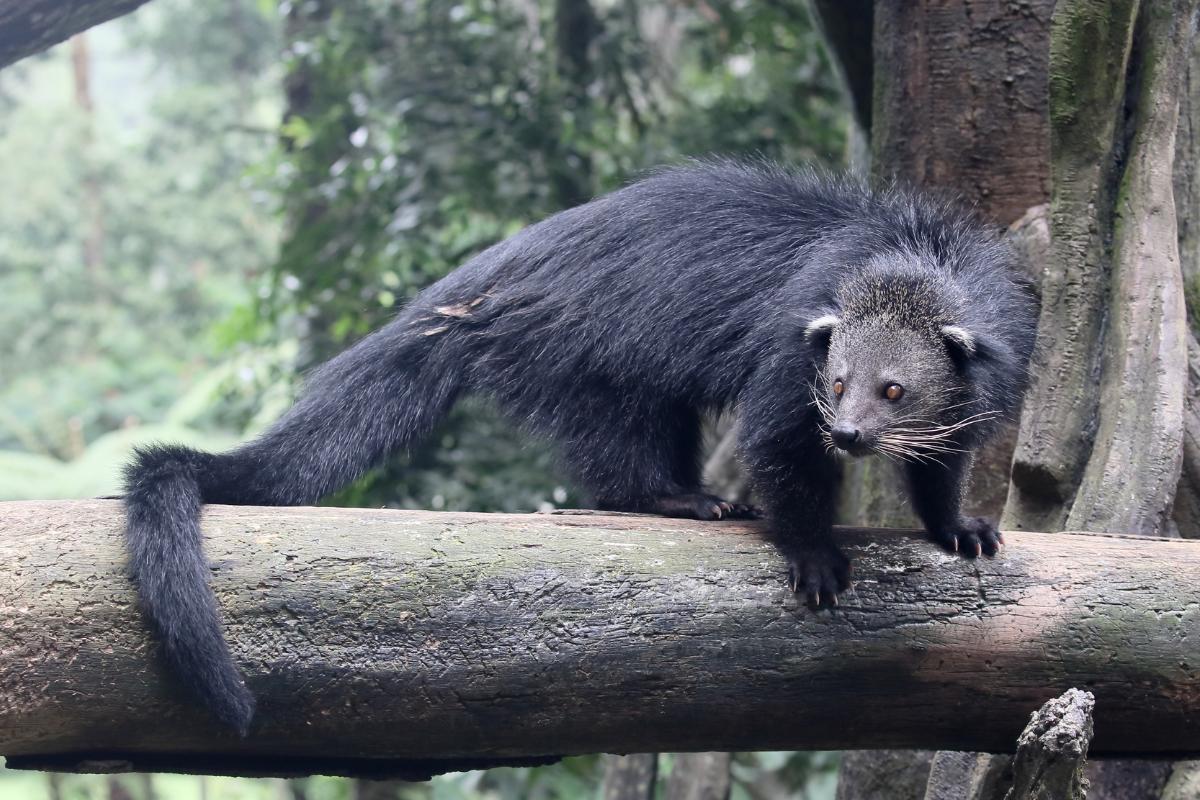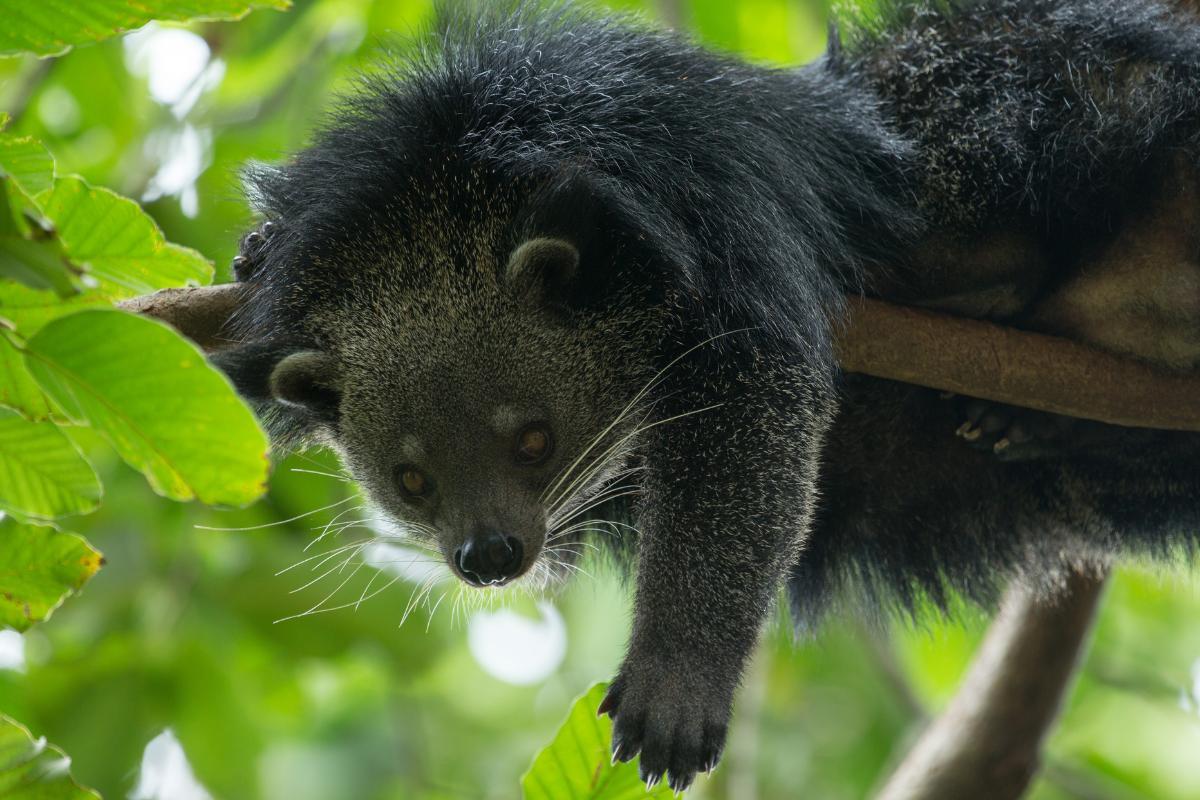What Is a Binturong?


Ever heard of an animal that smells like popcorn? Meet the binturong, also known as the bearcat, a mammal found in the dense forests of Southeast Asia. Despite its nickname, this creature is not related to bears or cats. Instead, it belongs to the viverrid family, making it a distant cousin of civets and genets. One of the binturong’s most intriguing traits is its distinctive scent, which resembles buttered popcorn. But that’s not all, binturongs are also skilled climbers, have a prehensile tail, and play an important role in their ecosystem by spreading fig seeds.
In this article by thedailyECO, we will explore what binturongs are, including their key characteristics and interesting facts.
What is a binturong and its characteristics
The binturong (Arctictis binturong), also known as the bearcat, is a species of omnivorous mammal in the family Viverridae, subfamily Paradoxurinae, whose range covers southern and southeastern Asia.
It inhabits dense tropical rainforests across countries including India, Nepal, Bangladesh, Bhutan, Myanmar, Thailand, Malaysia, Indonesia, and the Philippines. Now let us take a closer look at some of their most important characteristics:
- Its body is long and heavy, measuring 60-100 cm (24-40 inches) in length and weighing 9-20 kg (20-44 pounds), with short, strong limbs designed for climbing.
- Its prehensile tail (25-30 inches long) functions as a fifth limb for grasping branches, being bushy and thick at the base, becoming thinner towards the tip where it curls inwards. It is one of only two carnivores with this adaptation.
- Its snout is short and pointed, featuring prominent vibrissae (whiskers) that provide enhanced tactile sensitivity for navigating through dense foliage.
- Its eyes are small to medium-sized and dark, adapted for its nocturnal and crepuscular lifestyle.
- The ears are short, rounded, have white edges and end in dark tufts, helping with sound localization in the forest canopy.
- Its thick, dark fur is black to brown with silver-tipped guard hairs, creating a grizzled appearance that allows it to camouflage effectively in the dappled light of forest canopies, and its feet have strong, curved claws used for climbing and defense.
- It has good night vision, highly developed hearing and sense of smell, and produces a distinctive popcorn-like odor from anal gland secretions (caused by the compound 2-acetyl-1-pyrroline).
- Although called a "bearcat," it is neither a bear nor a cat, and can rotate its hind ankles 180 degrees to climb down trees headfirst.

The popcorn smell of binturong
Both male and female binturongs have specialized scent glands. In males, these glands are located between the scrotum and the penis, while in females, they are located on either side of the vulva. These glands emit a strong odor similar to popcorn, one of the most distinctive characteristics of this species.
This unusual scent is due to the presence of the volatile compound 2-acetyl-1-pyrroline (2-AP) in their urine and glandular secretions. Interestingly, this is the same chemical compound responsible for the aroma of freshly popped popcorn and certain varieties of aromatic rice like basmati and jasmine.
Binturongs use this scent for communication and territorial marking. As they move through the forest canopy, they drag their tails across branches, leaving behind their distinctive scent as olfactory "signposts" for other binturongs. This scent-marking behavior plays an important role in their social structure and reproductive strategies in the wild.
Habitat of the binturong
The binturong is native to South and Southeast Asia. Its range encompasses a diverse territory including India, Nepal, Bangladesh, Bhutan, Myanmar, Thailand, Malaysia, Cambodia, Vietnam, and the Yunnan province of China. The species also inhabits the Indonesian islands of Sumatra, Kalimantan, and Java, as well as parts of the Philippines.
This creature thrives primarily in dense, high-canopy forests, where it can be found from sea level up to elevations of 3,000 meters. The binturong's arboreal lifestyle is perfectly adapted to these lush forest environments, where it navigates through the canopy using its prehensile tail as a fifth limb.
Curious about the lush habitats where binturongs thrive? Explore our article to the complex web of life found in tropical rainforests.
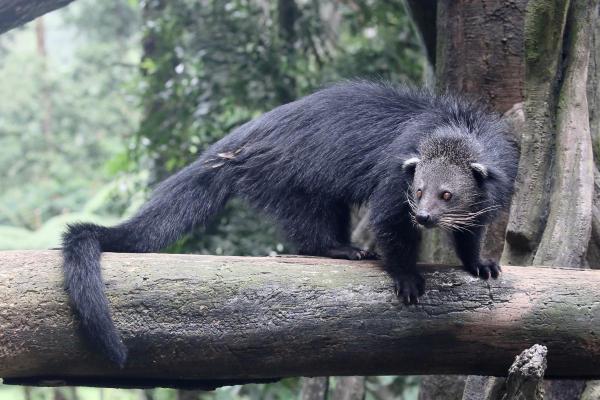
Diet of the Binturong
The binturong has evolved a versatile diet that contributes to its success in tropical forest ecosystems. As a true omnivore, it displays flexible feeding behaviors that allow it to adapt to seasonal availability of different food sources.
Fruits:
Fruits form the cornerstone of the binturong's diet, making up approximately 70-80% of what they consume. Figs are particularly important, with binturongs showing a strong preference for various species of wild figs. They also readily consume other fruits with soft pulp and large seeds, as well as berries and drupes found throughout the forest canopy.
Animal matter:
To supplement their primarily frugivorous diet, binturongs opportunistically consume small mammals including rodents and squirrels, birds, bird eggs, insects and their larvae, and small reptiles and amphibians. This protein-rich food provides essential nutrients that may not be available in fruit alone.
Plants:
Beyond fruits, binturongs also consume young leaves and shoots, flowers, and plant sap. These additional plant materials help round out their nutritional needs throughout different seasons when preferred foods might be scarce.
The binturong serves a crucial ecological function as a seed disperser. Their digestive system allows seeds to pass through intact, and they often defecate far from where they consumed the fruit. This makes them particularly important for large-seeded fruits that rely on larger mammals for dispersal. Some plant species in Southeast Asian forests may have co-evolved with binturongs, developing fruits specifically attractive to these animals to aid in seed dispersal.
Binturongs display interesting feeding behaviors adapted to their arboreal lifestyle. They often use their prehensile tail to hang from branches while gathering food with their front paws. Most feeding occurs in the canopy, though they will occasionally descend to the ground to forage. Their flexible diet allows them to shift food preferences seasonally, depending on availability. They may travel considerable distances within their territory to locate fruiting trees.
Behavior of the binturong
Binturongs are primarily crepuscular and nocturnal, becoming most active during dawn, dusk, and throughout the night. During daylight hours, they typically rest in tree hollows or dense vegetation. This activity pattern helps them avoid potential predators and regulate their body temperature in the hot tropical climate.
On the rare occasions they come to the ground, binturongs adopt a plantigrade gait similar to bears and humans, walking flat on their soles rather than on their toes. Their movement on land appears somewhat awkward compared to their confident tree navigation.
Binturongs are generally solitary animals, with adults maintaining individual territories. These territories are marked using their distinctive scent, produced by glands near the tail that emit an odor famously described as resembling buttered popcorn. Territory size varies depending on resource availability but can range from 0.5 to 20 square kilometers.
Despite their solitary nature, binturongs are not aggressively territorial and territories may overlap, particularly in areas with abundant food resources. During breeding season, males will seek out females, and temporary pairs may form.
Scent marking constitutes the primary form of binturong communication. Their unique scent helps establish boundaries and signals reproductive status. They deposit these scents by dragging their tails across branches and vegetation.
Vocally, binturongs have a diverse repertoire including chuckles, howls, and high-pitched sounds. Different vocalizations serve various purposes, from expressing aggression to signaling readiness to mate. Mother binturongs communicate with their young through soft chuckling sounds.
Binturongs create nests in tree hollows, dense vegetation, or abandoned animal nests. These secure locations provide shelter from the elements and protection from predators. Nests are typically lined with leaves and other soft materials for comfort.
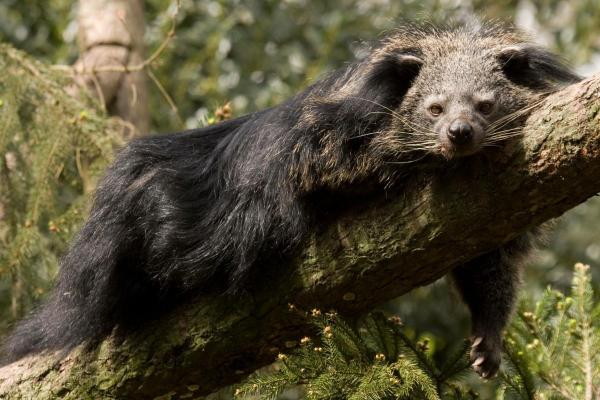
Reproduction of the binturong
Binturongs reach sexual maturity relatively late compared to other similarly-sized mammals. Females typically become reproductively active between 30-36 months of age, while males mature slightly earlier, at around 27-30 months. This delayed maturity ensures that individuals are physically capable of handling the demands of reproduction and parenting.
Unlike many mammals that have strict breeding seasons, binturongs can reproduce year-round in most of their range. However, some populations show breeding peaks that coincide with favorable environmental conditions, particularly those living in regions with more pronounced seasonal changes. These peaks often align with periods of fruit abundance.
One of the most notable aspects of binturong reproduction is the phenomenon of delayed implantation. After fertilization, the embryo develops to the blastocyst stage but then enters a period of dormancy before implanting in the uterine wall. This adaptive mechanism allows females to time births to coincide with optimal environmental conditions, enhancing cub survival.
During breeding, binturongs temporarily abandon their solitary nature. Males locate receptive females primarily through scent cues. Courtship typically involves vocalizations and mutual grooming behaviors. The actual mating process is brief, after which the pair generally separates and returns to solitary living.
Following successful implantation, the active gestation period lasts approximately 90-92 days. The total period from mating to birth, including delayed implantation, typically spans 3-4 months. Females prepare for birth by creating a secure nest in a tree hollow or dense vegetation. They typically give birth to 1-3 cubs, though litters of up to 6 have been documented in rare cases.
Binturong mothers provide extensive care for their offspring. Cubs are born altricial, which means they are relatively underdeveloped. They depend entirely on maternal care for the first few months of life. Their eyes open after about 10 days, and they begin to consume solid food at around 6-8 weeks, though weaning is gradual and may not be complete until 3-4 months.
Young binturongs remain with their mother for approximately one year, during which they learn essential survival skills including climbing techniques, food recognition, and predator avoidance. This extended period of maternal care represents a significant investment but ensures that offspring are well-prepared for independent life.
Threats and conservation of the binturong
Habitat loss and degradation represent the most significant threats to binturong populations throughout their range. Extensive deforestation driven by commercial logging, agricultural expansion (particularly for palm oil plantations), and infrastructure development has severely reduced their forest habitat. Forest fragmentation compounds these problems by isolating populations and disrupting movement patterns essential for genetic diversity.
The illegal wildlife trade presents another growing concern. Binturongs are increasingly captured for the exotic pet trade due to their unusual appearance and relatively manageable temperament when raised from infancy. They are also hunted for their meat, fur, and body parts used in traditional medicine in some regions.
The binturong is currently classified as "Vulnerable" on the IUCN Red List, indicating it faces a high risk of extinction in the wild. This global assessment reflects significant population declines across much of its range.
In India, the binturong receives the highest level of protection, listed in Schedule I of the Wildlife Protection Act. India has also included the species in Appendix III of CITES (Convention on International Trade in Endangered Species), which requires permits for international trade.
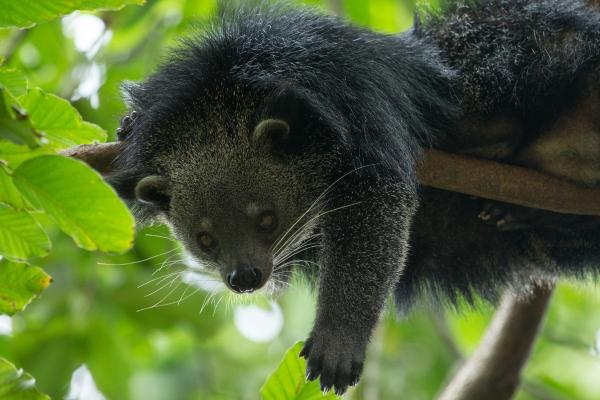
If you want to read similar articles to What Is a Binturong?, we recommend you visit our Wild animals category.
- Arctictis Binturong Conservation (2025). Available at: https://www.abconservation.org/en/
- IUCN (2024). The IUCN Red List of Threatened Species. Available at: https://www.iucnredlist.org

